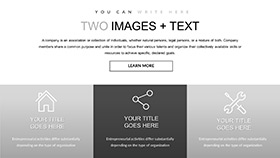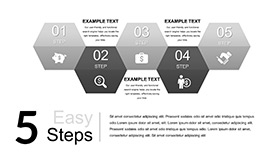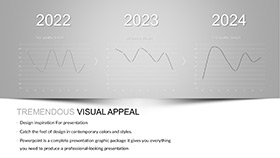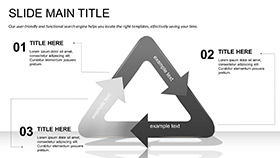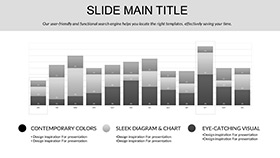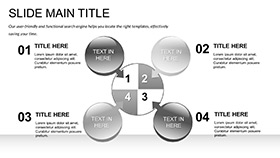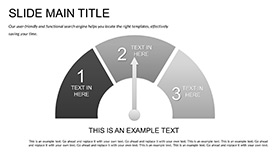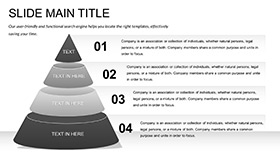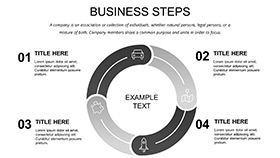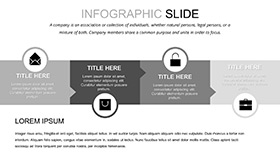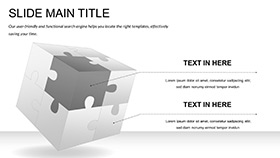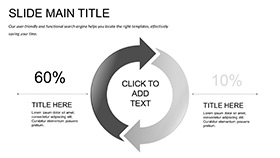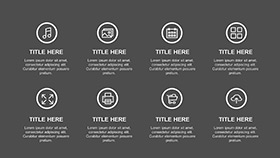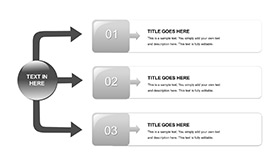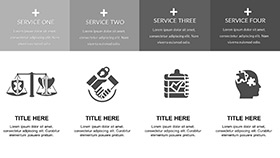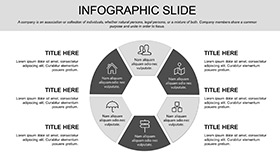Imagine transforming dense chemical formulas into captivating visuals that hold your audience's attention from the first slide. The Chemical Structure Keynote Template does just that, offering a seamless way for chemists, researchers, and educators to showcase molecular models, atomic interactions, and reaction pathways without the hassle of starting from scratch. With its precise diagrams and intuitive layouts, this template turns abstract concepts into tangible stories, making it an essential tool for anyone presenting scientific data in a professional setting.
Whether you're a professor illustrating organic synthesis in a lecture hall or a pharmaceutical developer pitching a new compound to stakeholders, this template streamlines your workflow. It includes 28 meticulously crafted diagrams across 3 master slides and 3 background options, all adaptable with 7 versatile color schemes to match your branding or lab aesthetics. Editable elements let you tweak bonds, atoms, and labels effortlessly, ensuring your content aligns perfectly with your narrative. Compatible with Keynote 2016 and later versions, it's designed for quick integration into your existing projects, saving you hours of manual design work.
Picture a slide where a benzene ring rotates subtly to emphasize electron delocalization - that's the level of detail this template brings to life. Beyond basic shapes, it incorporates layered vectors for depth, allowing you to animate transitions that mimic real molecular vibrations. For educators, this means engaging students with interactive elements that encourage questions like, "How does this structure influence reactivity?" In industry settings, it helps lab managers demonstrate compliance with safety protocols through clear, annotated diagrams of hazardous materials.
Unlocking Molecular Clarity: Key Features of the Template
Dive deeper into what makes this template a standout choice for scientific communication. At its core are high-resolution graphics that maintain sharpness even on large screens, ensuring your projections remain crisp during conferences. The 28 diagrams cover a spectrum from simple atomic orbitals to complex polymer chains, each built with scalable vectors for unlimited resizing without quality loss.
- Customizable Atomic Models: Adjust atom sizes, colors, and connections to represent elements accurately, from hydrogen's simplicity to carbon's versatility.
- Bond Visualization Tools: Single, double, and triple bonds rendered with varying line weights and dashed styles for resonance structures.
- Integrated Charts: Overlay molecular data with bar graphs or pie charts to correlate structure with properties like boiling points.
- Theme Flexibility: Switch between 7 color palettes, from cool blues for aqueous solutions to warm reds for exothermic reactions.
These features aren't just decorative; they're practical. A researcher at a biotech firm might use the orbital diagram to explain quantum tunneling in drug delivery systems, layering text annotations that fade in during narration. The result? A presentation that feels dynamic, not static, fostering deeper discussions.
Step-by-Step: Building a Reaction Pathway Slide
- Select Your Diagram: Choose from the 28 pre-built options, like the linear chain layout for sequential reactions.
- Input Data: Drag and drop your molecular formulas into editable text fields, auto-aligning with bond lines.
- Add Annotations: Insert callouts for energy barriers or catalysts, using the built-in shape library.
- Animate Transitions: Apply Keynote's build effects to reveal step-by-step transformations, simulating the reaction in real time.
- Finalize with Branding: Apply your institution's colors via the master slide, ensuring consistency across your deck.
This process, which takes under 10 minutes, contrasts sharply with building from blank slides, where alignment issues can derail your focus. Users often report how such efficiency lets them concentrate on content refinement, like incorporating real-world examples from Nobel Prize-winning syntheses.
Real-World Applications: From Lecture Halls to Lab Briefings
The true power of the Chemical Structure Keynote Template shines in its versatility across scenarios. In academic environments, professors leverage it to break down stereochemistry, using 3D-like projections to clarify chiral centers that textbooks struggle to convey. One common approach is dedicating a slide to enantiomers, where mirrored structures highlight optical activity, paired with a quick poll slide to gauge student comprehension.
For pharmaceutical professionals, it's invaluable during regulatory submissions. Visualize drug-receptor interactions with receptor-binding diagrams, annotating affinity constants directly on the slide. This not only speeds up preparation but also impresses reviewers with its professional polish. Consider a scenario where a team presents a novel antibiotic: the template's bond diagrams illustrate the beta-lactam ring's stability, making abstract pharmacology accessible to non-experts.
In corporate training, safety officers use it to map hazardous material structures, emphasizing reactive groups with highlighted warnings. This visual approach reduces miscommunication, ensuring teams grasp risks intuitively. And for student projects, it's a confidence booster - craft a thesis defense slide showing your synthesized compound's structure, backed by spectral data charts, to stand out in evaluations.
Integrating this template into your workflow means more time for experimentation and less for formatting. Pair it with Keynote's collaboration features for team reviews, where changes to a shared diagram propagate instantly, streamlining feedback loops.
Tailored Tips for Chemistry Educators
To maximize impact, start with audience analysis: for undergrads, keep diagrams simple with bold labels; for grads, layer in advanced features like hybridization indicators. Always test animations on the venue's projector to avoid surprises. Drawing from established practices, like those in the Journal of Chemical Education, embed interactive quizzes post-diagram to reinforce learning.
Why This Template Outshines Basic Options
Compared to vanilla Keynote slides, this template elevates your work with specialized tools absent in defaults. No more wrestling with misaligned lines or pixelated imports - everything is native and responsive. It's like having a digital lab bench for visuals, where precision meets creativity.
Start crafting your next presentation today with this free download, and watch how it clarifies the invisible world of chemistry for everyone involved.
Frequently Asked Questions
What file formats are included with the Chemical Structure Keynote Template?
The template comes in .key and .kth formats, fully compatible with Apple Keynote for Mac and iPad.
Can I customize the colors beyond the 7 schemes?
Yes, all elements are editable, so you can apply custom palettes using Keynote's color picker for perfect brand alignment.
Is this template suitable for high-resolution presentations?
Absolutely, with vector-based diagrams that scale without loss, ideal for 4K displays or printed handouts.
How many diagrams does it include?
It features 28 unique diagrams, covering everything from basic atoms to complex structures.
Does it support animations for molecular movements?
Yes, leverage Keynote's build-in effects to animate bonds forming or electrons orbiting seamlessly.
Who is the ideal user for this template?
Chemists, educators, pharma pros, and students seeking professional, accurate visualizations.









